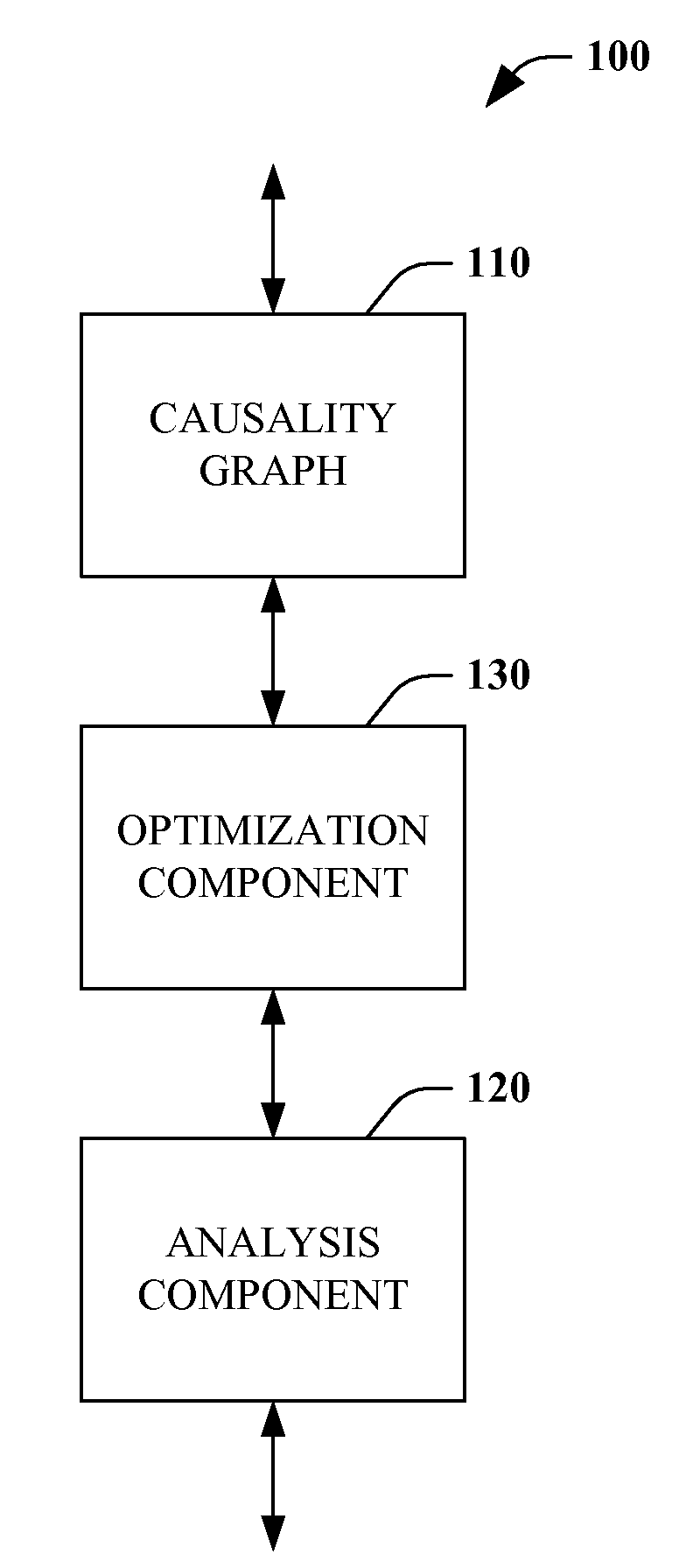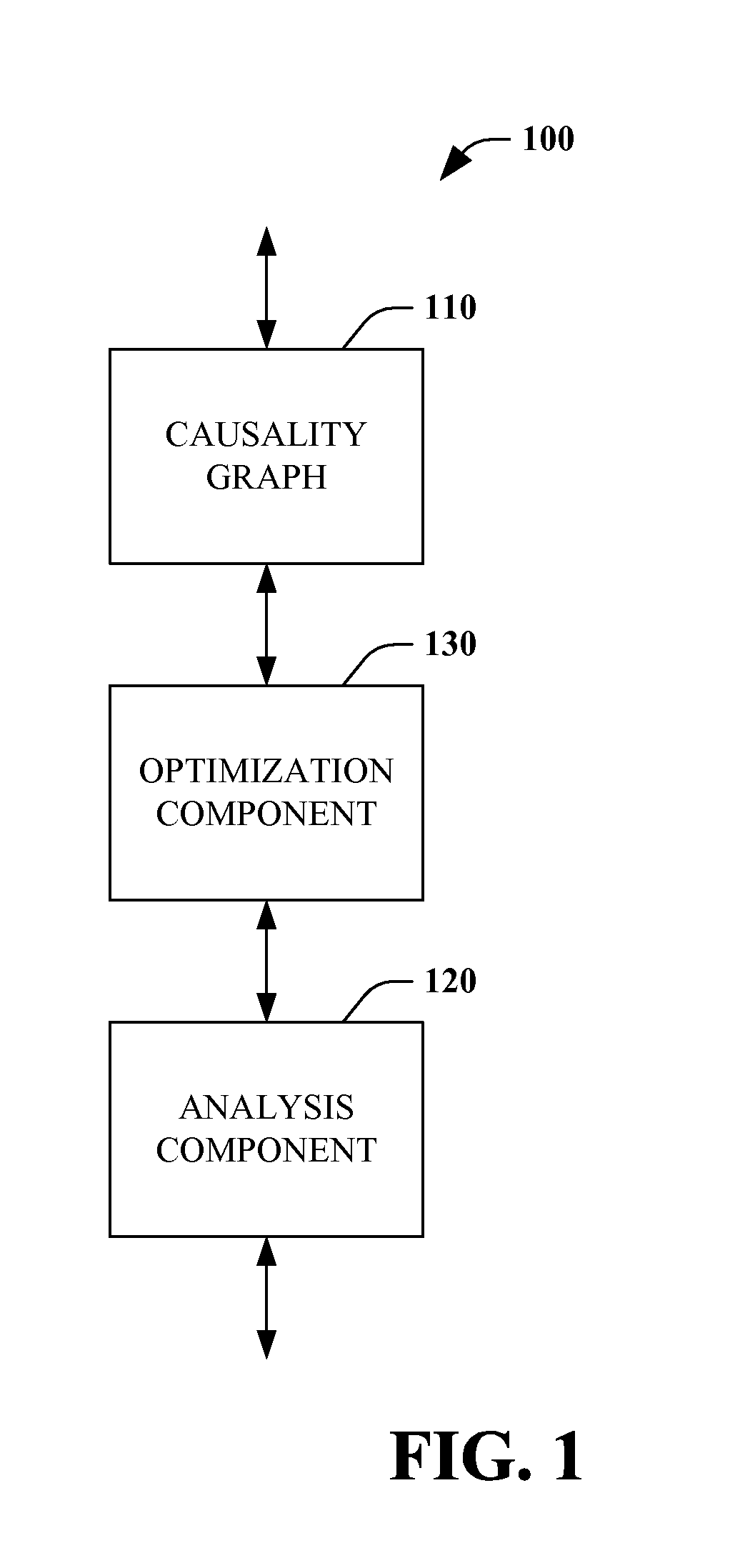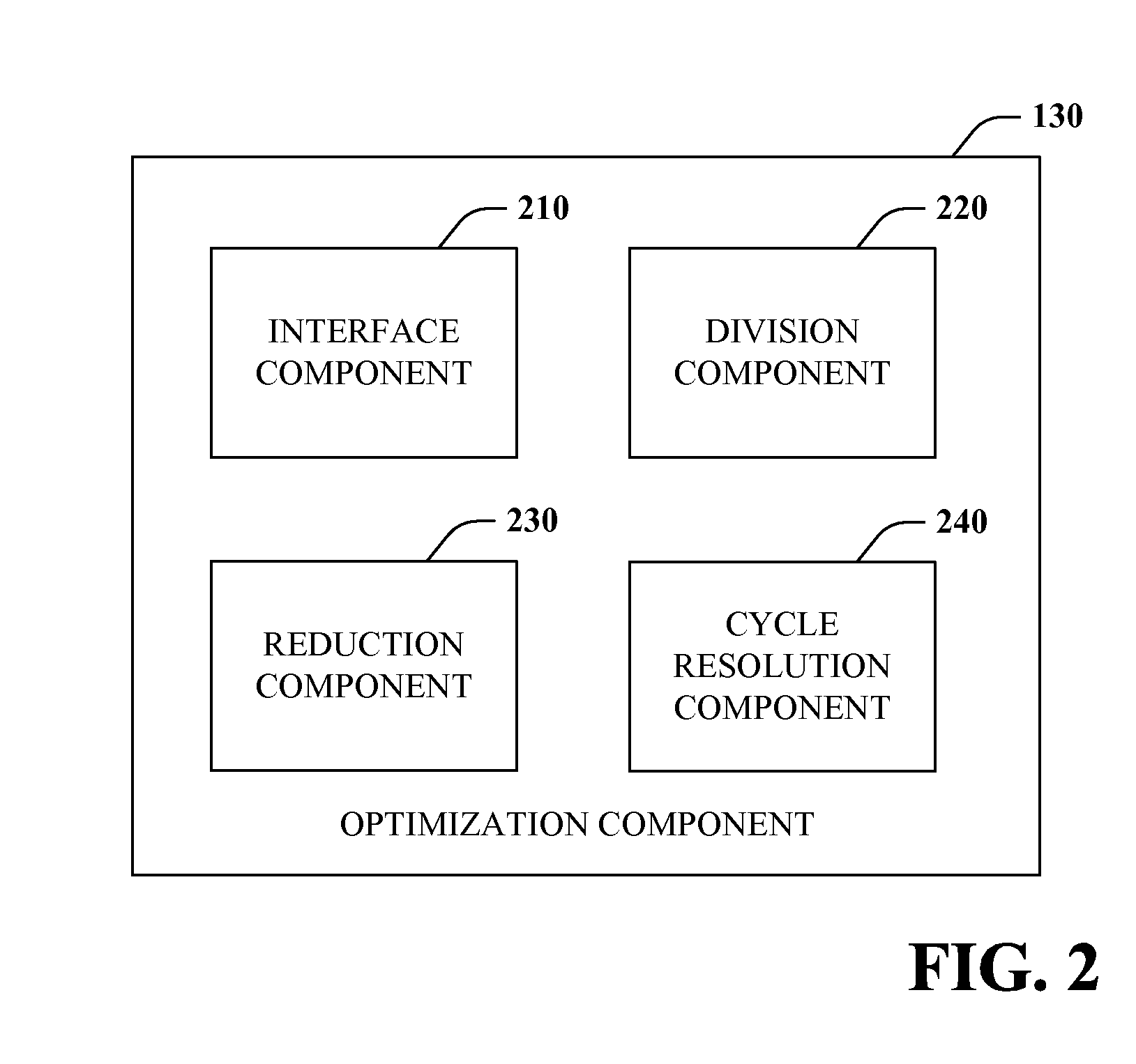Root cause analysis optimization
a root cause analysis and optimization technology, applied in the field of problem solving, can solve the problems of difficult diagnosis of problems, many forms, etc., and achieve the effect of optimizing sub-graphs, reducing the number of iterative cycles, and being easy to manipula
- Summary
- Abstract
- Description
- Claims
- Application Information
AI Technical Summary
Benefits of technology
Problems solved by technology
Method used
Image
Examples
Embodiment Construction
[0035]Systems and methods pertaining to optimizing root cause analysis are described in detail hereinafter. Historically, root cause analysis has a family of techniques that analyze a causality or inference graph, along with reasoning algorithms. However, simply providing an inference graph to a root cause engine can lead to unexpected wait times for a response due to the numerous iterations that the root cause system or engine must perform. Furthermore, problems can arise due to the complexity of modeling causal relationships between multiple entities or work from multiple authors, among other things. Therefore, it is advantageous to optimize a causality or inference graph to facilitate root cause analysis.
[0036]In accordance with one aspect of the claimed subject matter, a causality graph can be divided into multiple sub-graphs to enable parallel processing of portions of the graph. According to another aspect, causality graphs can be reduced or simplified to facilitate processing...
PUM
 Login to View More
Login to View More Abstract
Description
Claims
Application Information
 Login to View More
Login to View More - R&D
- Intellectual Property
- Life Sciences
- Materials
- Tech Scout
- Unparalleled Data Quality
- Higher Quality Content
- 60% Fewer Hallucinations
Browse by: Latest US Patents, China's latest patents, Technical Efficacy Thesaurus, Application Domain, Technology Topic, Popular Technical Reports.
© 2025 PatSnap. All rights reserved.Legal|Privacy policy|Modern Slavery Act Transparency Statement|Sitemap|About US| Contact US: help@patsnap.com



